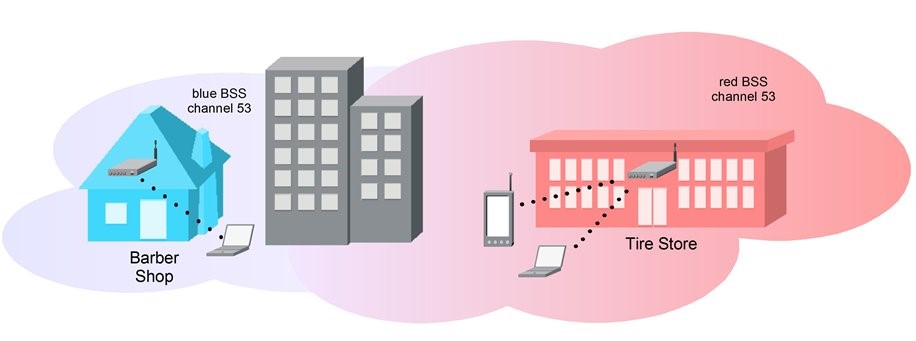BSS Coloring in WiFi 6
BSS Coloring in WiFi 6
If you’ve ever used a two-way radio or walkie-talkie, you’ve probably had the experience where the person you’re listening to gets “stepped on” by somebody else’s transmission. You may have also noticed times when the person you’re listening to “steps on” someone else’s transmission, overpowering it.
WiFi networks have long dealt with the same issues, avoiding the “stepped on” transmission by performing channel assessments and signaling intent to use a channel. This coordination and cooperation even happens between WiFi networks that otherwise have no connection to one another. If the barber shop runs an AP on channel 53 and the tire store also runs on channel 53, the two are going to share the channel. The tire store AP has its clients; the barber ship AP has its clients. Their access points and clients will each listen for the transmissions on channel 53, yielding access if the power of any transmission is above a modest -82 dbm.
In each case, the AP and its clients form a Basic Service Set, or BSS. To make better use of shared channels, WiFi 6 (802.11ax), introduces the notion of BSS coloring. The ‘color’ is a small integer in the transmission preamble. For the sake of our discussion, lets say that the integers actually correspond to colors; the BSS of the AP and all of the WiFi clients in the barber shop is blue; the tire store BSS is red. BSS color makes it immediately possible for all WiFi devices to tell whether a transmission is meant for the tire store or the barber shop.

BSS coloring facilitates “stepping on” another BSS’s traffic. If the AP in the tire store (red) wishes to transmit while a device in the barber shop is talking (blue), it can make a decision to broadcast over the ongoing transmission, even if the power is as high as -62 dbm. The reason this will work is that each BSS and its clients are in proximity to one another and the interference caused by its neighbors is dynamically judged to be low enough to permit the simultaneous transmission to succeed. One channel; two transmissions.
The benefit of BSS Coloring is that we can build denser WiFi networks with more channel overlap. BSS Coloring is one of the powerful new capabilities in WiFi 6.
- Kevin Dowd